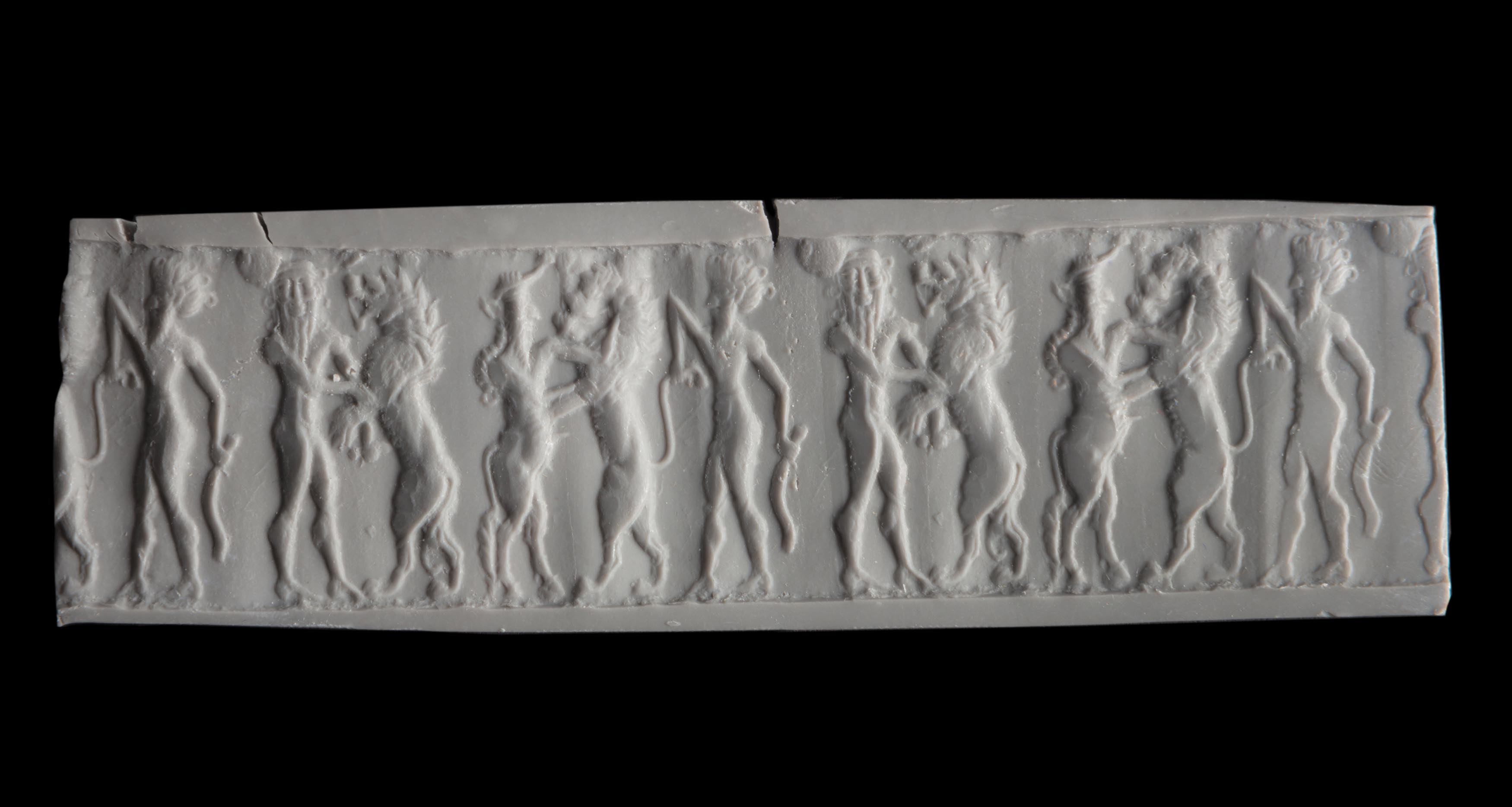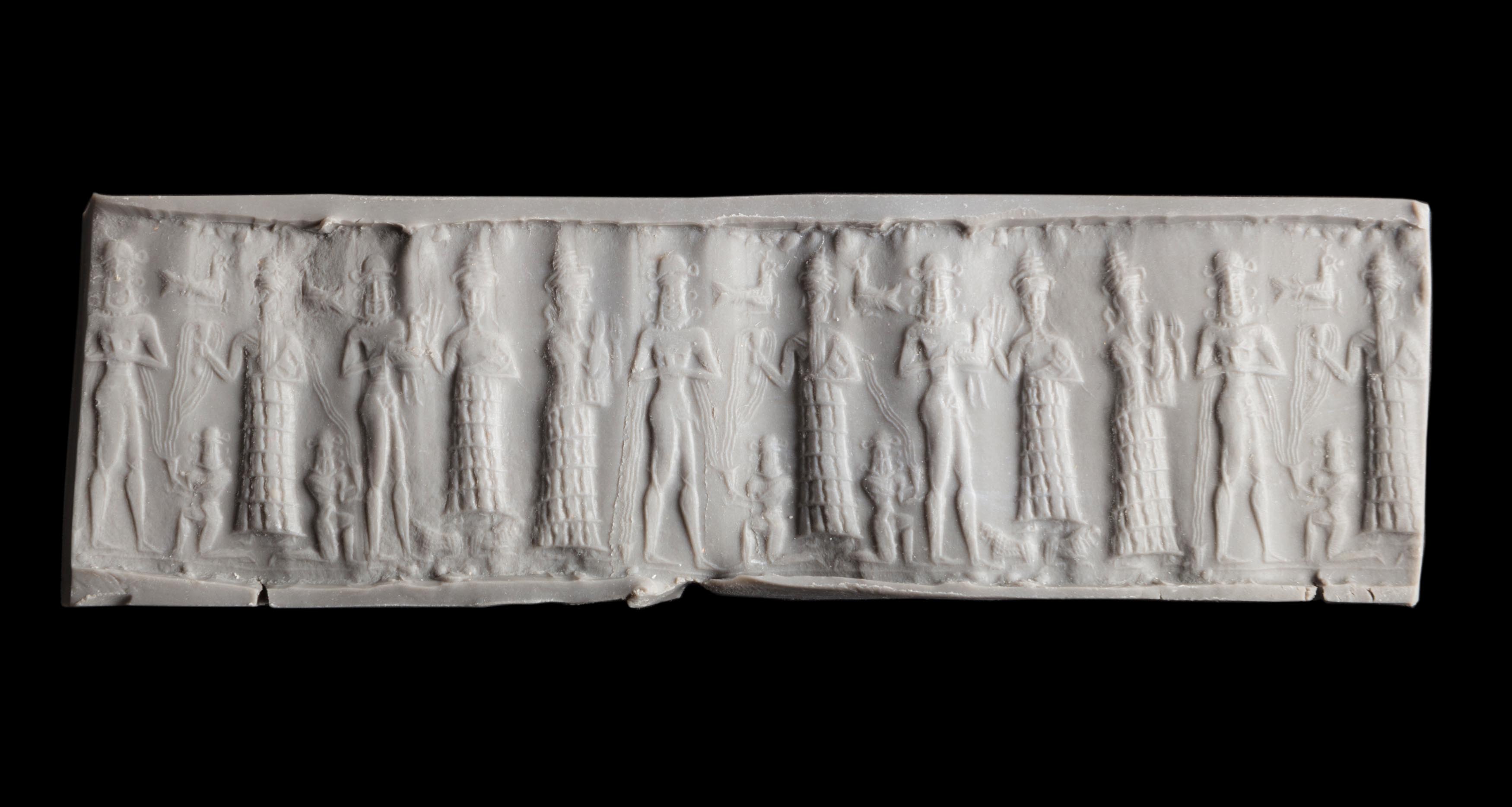51. Seal Impression

These modern impressions of ancient Neo-Babylonian cylinder seals in the collection of the Morgan Library were made by fifth grade students in a workshop at the Morgan Library led by Sidney Babcock, Curator of Seals and Tablets, and designed by Michelle Marcus of Dalton’s Museum Program.

Voices are hushed and eyes are sparkling as a small group of fifth graders enters the former boardroom of the Pierpont Morgan Library & Museum. Before them: an exquisite array of stone cylindrical seals made between 3000 and 1000 BCE in the great cities of ancient Mesopotamia (present-day Iraq). Light bounces off the surface of the semi-precious stones — lapis lazuli, chalcedony, red jasper — none any taller than one’s thumb. The seals feel heavier than expected, as the dense stones and the weight of history sink into the palm of these young hands. The students marvel at the intricate designs carved into the seal stones which create a continuous impression when rolled across a damp clay surface.
As the students know from their preparation in class, cylinder seals were used in ancient Mesopotamia to seal clay tablets and commodities as signs of authority and ownership. What the students are never quite prepared for, however, is the experience of personally rolling one of the Morgan seals across damp clay and creating their own impression of the carved design and their own stunning work of art. Hands inevitably shake and eyes occasionally water as the students are struck by the fact that they are using an ancient artifact in much the same way it was used in Mesopotamia thousands of years ago. It is this sense of having a shared experience with an individual from the distant past that makes the Morgan visit and a student’s modern seal impression from one such visit so remarkable.
—Michelle Marcus, Ph.D. Art Historian, Dalton Museum Program
